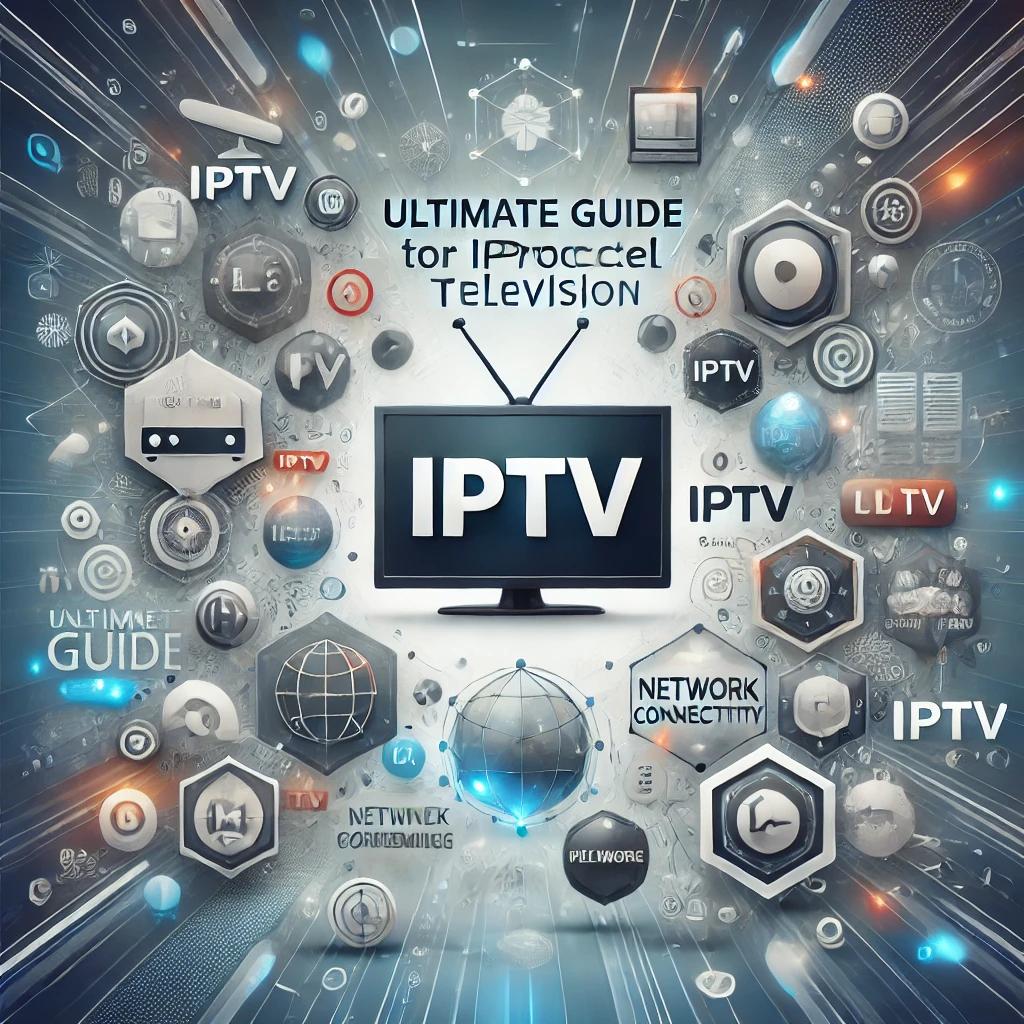Introduction In recent years, Internet Protocol Television (IPTV) has revolutionized the way we consume media. With IPTV, users can access live TV channels, Video on Demand (VOD), and interactive TV services via the internet, bypassing traditional broadcasting methods like cable or satellite. This guide dives deep into IPTV, explaining its concept, architecture, and setup options, while exploring the role of IPTV stream providers, middleware, and IPTV players.
1. What is IPTV?
IPTV (Internet Protocol Television) is a digital television broadcasting method that delivers TV content via IP (Internet Protocol) networks. Unlike traditional TV, which relies on satellite signals or cable networks, IPTV allows users to stream content in real-time or on-demand through internet connections.
Key IPTV Features:
- Live TV: Real-time broadcasting of TV channels.
- Time-Shifted Media: Catch-up TV or rewinding live broadcasts.
- Video on Demand (VOD): Access a library of movies and shows anytime.
- Interactive Services: Features like voting, quizzes, and shopping via TV.
2. How IPTV Works (High-Level Overview)
At a high level, IPTV works by converting TV signals into IP packets, which are then transmitted over an IP network and decoded by the end-user’s device.
IPTV Workflow:
- Content Source: TV channels, live broadcasts, and video files.
- Encoding and Compression: The content is compressed using codecs like H.264, H.265, or MPEG-4.
- Middleware: Acts as a bridge between the IPTV server and end-user devices.
- IPTV Player: End-user apps or set-top boxes decode and display the content.
- Content Delivery Network (CDN): Ensures efficient delivery and minimal buffering.
3. Key IPTV Components Explained
a. IPTV Stream Provider
The IPTV stream provider is responsible for sourcing, encoding, and hosting the video streams. Providers offer raw streaming links (e.g., .m3u8) or integrate with middleware.
- Examples: Xtream Codes, Flussonic, Wowza Streaming Engine
b. IPTV Middleware
Middleware acts as the intermediary between IPTV providers and client devices. It manages user authentication, channel organization, and EPG (Electronic Program Guide).
- Popular Middleware Platforms: Ministra (Stalker Middleware), Xtream UI, Telebreeze
- Open-Source Middleware: IPTV/OTT middleware like OpenSTB or TVHeadend
c. IPTV Player
IPTV players decode and display the content provided by IPTV streams.
- Set-Top Boxes (STB): MAG 250, MAG 322
- Apps: STBEmu, IPTV Smarters Pro, TiviMate
- Media Players: VLC Media Player, Kodi
4. Different IPTV Setup Options
Option 1: Using M3U Files
- How It Works: Directly access
.m3uor.m3u8playlist files. - Pros: Simple setup, accessible on apps like VLC.
- Cons: Limited features, no middleware benefits.
- Best For: Individual users.
Option 2: Using Middleware
- How It Works: Middleware manages channels, user accounts, and advanced features.
- Pros: Advanced control, user management, and better user experience.
- Cons: Technical complexity, requires a server.
- Best For: Large-scale IPTV services.
Option 3: Using IPTV Apps
- How It Works: Apps like STBEmu or IPTV Smarters Pro act as IPTV clients.
- Pros: User-friendly, supports playlists and middleware.
- Cons: Dependence on third-party apps.
- Best For: Flexible and user-centric experience.
5. How Middleware Works
Middleware is the backbone of a robust IPTV setup. It authenticates users, manages content, and ensures smooth communication between IPTV servers and clients.
Middleware Functions:
- Authentication: Validates users via MAC address or login credentials.
- Content Management: Organizes live TV, VOD, and EPG data.
- Session Management: Handles concurrent streaming sessions.
Open-Source Middleware Options:
- TVHeadend: Open-source live TV and PVR server.
- MythTV: Another popular open-source middleware.
6. Streaming YouTube via IPTV
Streaming YouTube through IPTV typically involves embedding YouTube video links in an IPTV playlist or configuring middleware to include YouTube streams.
Methods to Stream YouTube via IPTV:
- M3U Playlist: Add YouTube stream URLs (
https://www.youtube.com/watch?v=VIDEO_ID). - Middleware Integration: Some middleware platforms allow embedding external streams.
- STBEmu App: Advanced players often support YouTube streams directly.
Challenges: YouTube frequently changes its streaming URLs, so maintaining playlists can require updates.
7. Pros and Cons of IPTV
Pros:
- Access to global channels.
- VOD and time-shifted viewing.
- Compatible with multiple devices.
Cons:
- Dependency on stable internet.
- Geo-restrictions on some streams.
- Risk of using unlicensed providers.
8. Top IPTV Recommendations
Best IPTV Players:
- STBEmu
- IPTV Smarters Pro
- TiviMate
Best Middleware Platforms:
- Ministra TV Platform
- Xtream UI
- OpenSTB (Open Source)
Best Set-Top Boxes:
- MAG 524w3
- Formuler Z8
- NVIDIA Shield TV
9. IPTV Legal and Ethical Considerations
Using IPTV services should always comply with regional copyright laws. Choose licensed IPTV providers and avoid piracy.
Legal IPTV Services Examples: Hulu Live TV, YouTube TV, Sling TV
Conclusion
IPTV offers an unparalleled viewing experience, blending live TV, on-demand content, and interactive features. Understanding its components—stream providers, middleware, and players—is key to building or accessing a reliable IPTV setup.
Whether you’re a casual viewer, service provider, or tech enthusiast, IPTV has something to offer. Choose your tools wisely, ensure compliance with legal guidelines, and enjoy the future of television.
What’s Your Experience with IPTV? Share your thoughts in the comments below!

